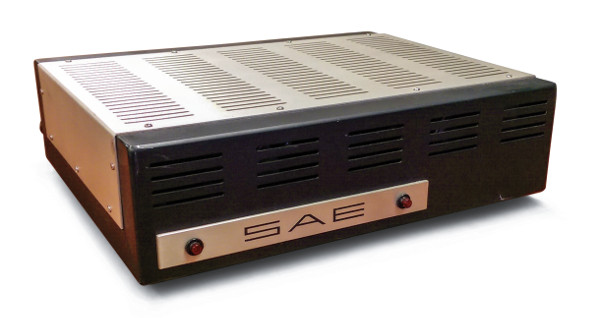15 Minutes with SAE Founder, Amp Guru Morris Kessler Page 2

S&V: Drawing on almost 50 years of experience, what are the most important technical principles that drive great amplifier design—things must be a priority and/or cannot be compromised?
Kessler: All the old requirements still apply: The amplifier must be reliable, accurate, and quiet. Protection circuits must protect the amplifier from catastrophe yet not intrude on any program material. All of ours are optically coupled and out of the active circuit. Voltage and current must be available to satisfy the demands of the program material and the amplifier itself cannot intrude on the user experience. So, no bumps, thumps, or hiss during normal operation or during turn-on and turn-off. I believe the fully differential balanced design with our four-quadrant input stage and current feedback is the best way to achieve my goals. And I cannot take personal credit for all of these improvements, the actual transistors keep getting better and better and the ThermalTrak devices we now use insure the amp will have the same performance at all times.
S&V: In terms of design philosophy, how are the new SAE amplifiers (including the 2HP-D) similar—and different—from earlier SAE designs and recent ATI designs? What tried-and-true principles are adhered to and what are the key departure(s)?
Kessler: By the time Brian persuaded me to relaunch SAE, I had some new ideas to explore. The design brief was to make the best two-channel amplifier in the world. We wanted 600W RMS minimum per channel full-band at 8 ohms with less than 0.01 percent THD; signal to noise ratio approaching 130 dB, complete stability with any load and compelling cosmetics. It required rigorous circuit layout. We're not only electrically balanced but also physically balanced with the central ground point as the fulcrum. We turned to surface mount devices for the input stage. We're using a four-layer circuit board with two layers for the power plane and one for ground. We even use a solid copper bus-bar to tie the channels together. And the meters—unlike the old VU meters where momentum made it impossible to correctly track power output—the new virtual VU meters are amazing. While they share the appearance of the old, these meters have no mass and we can use two pointers to accurately track and report instantaneous power and average power at the same time.
S&V: What sets the new SAE amplifiers apart from other top amplifiers on the market today?
Kessler: I think the combination of consistency and quietness make these amps unique.
S&V: What’s your take on the modern amplifier topologies—notably Class D—used in many of today’s lifestyle audio products and even some AV receivers? Do you see them as having sonic limitations that are insurmountable or is there a place for them in today’s world?
Kessler: Today we have amplifiers everywhere. We have them in every TV. We have them in our pockets—think of your cell phone. We have them in audio systems, in-line at the drive-through or in use in the concert hall. So I think the first criteria for an amplifier or amplifier designer is: what is the application? For many applications, Class D is the technology of choice regardless of the limitations. For your cell phone or the speakers used for a concert at Riverfront Stadium, Class D may be the only choice.
S&V: Are all you designs traditional Class AB? And, if so, why? What other amplifier topologies do you see as having potential?
Kessler: My current designs are Class AB but we have followed the developments in Class D very closely. While the initial efforts did not meet our criteria—frequency response varied greatly as the impedance of the speaker changed, for example—there is at least one Class D solution we now find acceptable. I don’t think we’ve yet reached the point where the best Class D equals the best of Class AB.
S&V: Do you think the audiophile, as traditionally defined, is a dying breed?
Kessler: Certainly our traditional audiophile is less active. He has a system and little compelling reason to change. So that part of the market is stagnant. Yet, if you look at the headphone market I think there’s strong interest in better sound from customers of all ages. Will that eventually translate into better quality reproduction in the home? I believe it will. And I’d like to see music instruction put back into our school system. In the long run, I think that would be a big help.





























































